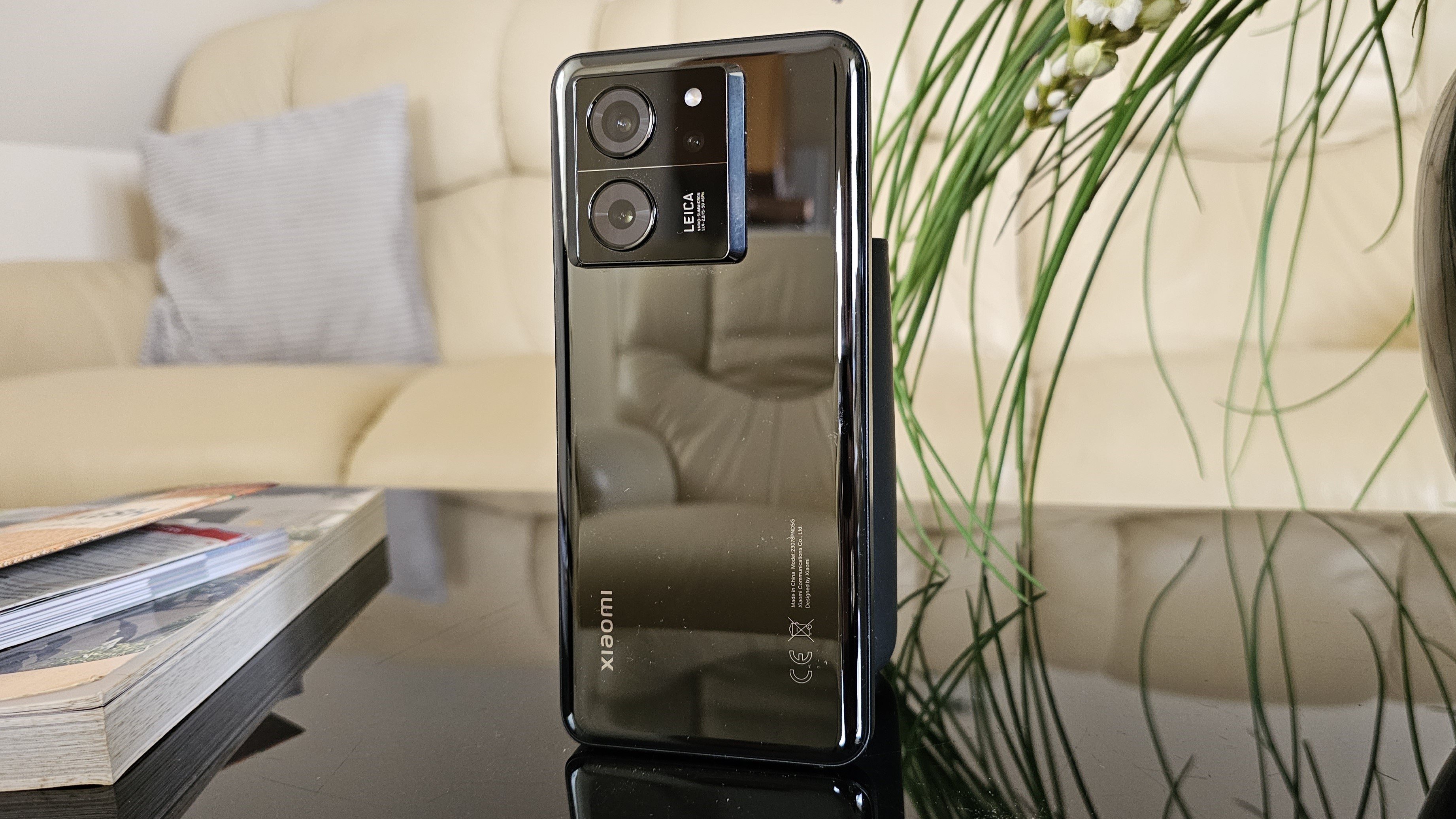Xiaomi isn’t an American household name because it doesn’t sell phones in this country, but it’s still one of the most important smartphone manufacturers in the world. It goes toe to toe with Apple and Samsung in its native China and is comfortably the third biggest player in the global market.
Part of Xiaomi’s success has come from what you might call a deluge of devices. For better or worse, Xiaomi makes a lot of phones – both within its core brand, and across its Poco, Redmi, and Black Shark sub-brands. That means there are a lot of excellent Xiaomi phones to pick from, but also that it can be difficult to find the best one for you.
Fortunately, we’re here to help. Note that we’ve often seen big discounts during Black Friday season, so now is a great time to look if you’re looking to save some money.
Why you should trust us: Every year our team reviews loads of Xiaomi handsets, from flagship models like the Xiaomi 14 to entry-level devices. Tech Advisor staff and contributors all use these phones with our own SIM cards, so we get a true-to-life experience of the performance, battery life, and more. We’ve also reviewed many competitors from the likes of Google, Samsung and OnePlus, so we know how Xiaomi phones stack up against rivals.
Updated 20 November 2024: In our most recent update, we added the mid-range models, the 14T and 14T Pro, and Xiaomi’s first foldable, the Mix Flip.
Best Xiaomi phone reviews 2024
1. Xiaomi 14 – Best Xiaomi phone
Pros
- Incredible cameras
- Flawless performance
- Super-fast charging
- Stunning screen
Cons
- HyperOS software annoyances
- Fingerprint magnet on certain colours
- More expensive than some rivals
Price When Reviewed:
Unavailable in the US
The Xiaomi 14 is a brilliantly competent and compact flagship for 2024 that outpaces rivals in many areas.
There’s very little to complain about when it comes to the hardware, even if it’s very similar to last year’s Xiaomi 13. It both looks and feels premium, with a stunning Jade Green colour on offer. It’s one of the smallest flagship phones you can buy, with a similarly sized build to the Pixel 8.
The rear design is paired with a 6.36-inch AMOLED 120Hz Full-HD display that is bold and bright, making it perfect for watching videos. Underneath the hood, you get a Snapdragon 8 Gen 3 processor, making it plenty capable of running demanding games and tasks.
The trio of 50Mp rear-facing cameras (co-developed with iconic camera company Leica) makes for a formidable setup. This is largely thanks to the 1/1.31-inch sensor on the main camera, which delivers DSLR-level snaps.
Xiaomi’s new operating system, HyperOS, isn’t a big improvement over MIUI. There’s still the usual bloatware, for example. If that’s not a dealbreaker, then you should seriously consider the Xiaomi 14 as your next flagship phone.
Read our full
Xiaomi 14 review
2. Xiaomi 14 Ultra – Best camera

Pros
- Incredible photography performance
- Stunning vegan leather design
- Gorgeous curved screen
- 90W fast charging
- Top performance
Cons
- Expensive
- HyperOS software is a mixed bag
Price When Reviewed:
Unavailable in the US
If you want a smartphone dedicated to photography, the Xiaomi 14 Ultra is the best model you can buy. The phone boasts an incredible Leica quad camera system, with OIS and a huge 1-inch sensor on the main 50Mp snapper. It even comes with an optional Photography Kit, which transforms it to rival compact mirrorless DSLRs.
The Xiaomi 14 Ultra has a distinctive design, along with a durable IP68 rating. Combined with the 6.7-inch AMOLED 120Hz curved display and 90W fast charging, this smartphone is a true premium option.
All those features are reflected in its high price tag. However, if your budget can stretch that far, then this can take some of the best photos of any smartphone, period.
Read our full
Xiaomi 14 Ultra review
3. Xiaomi 14T Pro – Flagship features for less

Pros
- Storming performance
- Decent cameras
- Very competitively priced
- Super speedy charging
Cons
- Cluttered software with incomplete AI
- Fairly dull design
- No charger included
Price When Reviewed:
Unavailable in the US
The Xiaomi 14T Pro is an almost flagship smartphone for a fraction of the price. It offers competitive performance, a 144Hz OLED display, a decent camera set-up and a durable metal frame build.
It’s a big step up from the previous generation equivalent, the Xiaomi 13T Pro. This is mainly thanks to the inclusion of 50W wireless charging, a more practical finish and a far more reliable battery life. Sadly, it’s not quite a slam dunk.
HyperOS has its frustrations, while the new AI features don’t seem to stack up against rivals. Nonetheless, there is no denying that this phone may tempt users who want high-end features without an extortionate price tag.
Read our full
Xiaomi 14T Pro review
4. Xiaomi 13 – Best former flagship

Pros
- Small and stunning design
- Powerful Snapdragon 8 Gen 2 processor
- Excellent main camera
Cons
- Middling battery life
- Competitors offer more for the money
Price When Reviewed:
Not available in US
On the hardware front, the Xiaomi 13 is solid. It’s extremely well built, and more durable than the previous generation. The main camera produces clear, crisp shots, even in darker conditions, and we can’t ignore its impressive performance thanks to the Snapdragon 8 Gen 2 chipset.
It offers the best of the Xiaomi 13 Pro but in a smaller package and at a lower price – though do bear in mind that the camera, while great, isn’t the same as in its Pro sibling.
If the Xiaomi 13 has a failing, it’s only that rival offerings from competing brands look a little more appealing at the same price.
Read our full
Xiaomi 13 review
5. Xiaomi Redmi Note 13 Pro – Best Redmi

Pros
- Smooth performance
- Bright 120Hz AMOLED screen
- Fast charging
- Double the storage
Cons
- Frustrating software experience
- Limited software support
- Some camera issues
Price When Reviewed:
Unavailable in the US
The Redmi Note 13 Pro is a compelling yet affordable smartphone. It’s got some downgrades compared to its big sibling, the Redmi Note 13 Pro+. However, it’s also available at a lower price point.
You get some impressive specs, such as the Snapdragon 7s Gen 2 chip, an AMOLED screen with 120Hz refresh rate, and speedy 67W charging. It’s also got a solid main camera, though the supporting cameras don’t live up to the same standard.
While there’s lots to like about the Redmi Note 13 Pro, it has the usual Xiaomi software woes and only two years of updates.
Read our full
Xiaomi Redmi Note 13 Pro review
6. Xiaomi 14T – Best mid-range option

Pros
- Slick design
- Brilliant cameras
- Circle to Search and Gemini support
- Solid performance
- Speedy charging
Cons
- No charger included
- No wireless charging
- Plastic frame
- Own-brand AI is a mixed bag
Price When Reviewed:
Unavailable in the US
Like its Pro sibling, the Xiaomi 14T offers incredible value for the price. It can multitask with ease and can handle a wide range of games, apps and media, It’s got an array of solid cameras, the design is quick and the charging is speedy at 67W.
The 14T Pro is more expensive, and whether the price is worth it depends on what’s important to you. If you stick with the 14T, you’ll miss out on improved main and telephoto lenses, wireless charging, a metal frame and better gaming performance.
If none of those things bother you, then you may as well save money by opting for the 14T.
Read our full
Xiaomi 14T review
7. Poco X6 Pro – Best Poco

Pros
- Outstanding performance for the money
- Advanced display
- Subtle design improvements
- Fast charging with adapter included
Cons
- Camera not a huge improvement
- New HyperOS UI much like MIUI
- Rather bland looks, at least in black
The Poco X6 Pro 5G boasts a 120Hz AMOLED display with a resolution of 2712 x 1220. It is bright, vibrant and buttery-smooth, and still better than most rivals at this price. The 2160Hz touch sampling rate also means it’s responsive for gamers.
That gaming audience can also expect a MediaTek Dimensity 8300-Ultra chip with 12GB RAM, making it able to run even some of the most demanding titles. On our benchmarking tests, it goes toe-to-toe with some flagship phones like the Pixel 8.
The big 5000mAh battery means that the phone can last either a full day with heavy usage or two days if you’re more conservative. Plus, the 67W charger can juice it to over 80% in 30 minutes.
The 64Mp main camera comes with OIS, offering impressive detail and colour representation in well-lit environments – even those with low light. The accompanying 8Mp ultrawide does have noticeable downgrades compared to the main camera, but the 16Mp front snapper provides surprisingly impressive shots.
Xiaomi has traded MIUI for HyperOS with the X6 Pro, but there aren’t many differences to the software. Nonetheless, at £369 it’s undercutting many rivals that have similar specs by quite some way, making it a tempting option for the cost-conscious.
Read our full
Poco X6 Pro review
8. Xiaomi 13T Pro – A cheaper premium option

Pros
- Top-tier performance
- 120W charging
- IP68 rating
- Five years of security updates
Cons
- Frustrating MIUI software
- Average battery life
- Polarising rear design
On the hardware front, the Xiaomi 13T Pro is a bona fide flagship phone.
It comes with 120W charging speeds and a durable build with an IP68 rating. The AMOLED panel is one of the best we’ve seen on any smartphone full stop, whilst the MediaTek chipset delivers top-tier performance.
However, the software experience is frustrating, and the battery life also isn’t something to shout about. That mirror-style rear may also be off-putting to some. Moreover, rivals from Google and Samsung mean that it faces stiff competition.
There is also the regular 13T model to consider, which has a few downgrades but a cheaper price tag.
Read our full
Xiaomi 13T Pro review
9. Xiaomi Redmi Note 13 Pro+ – Another mid-range contender

Pros
- Superb 120Hz screen
- Very good performance
- Premium design
- Solid battery life
- 120W charging
Cons
- Hit-and-miss cameras
- Annoying software
- Only three Android version updates
The Note 13 Pro+ elevates Xiaomi’s budget-friendly Redmi brand from competitive mid-rangers to potential flagship killer.
Its headlining 200Mp camera is a bona fide premium feature, while performance and display are among the best you’ll find at this price point. Battery life is solid too, while the 120W fast charging is excellent.
As a result, the 13 Pro+ is easy to recommend. The polarising MIUI software and poor supporting rear cameras are the only real downsides, but you certainly shouldn’t rule out this phone.
Read our full
Xiaomi Redmi Note 13 Pro+ review
10. Xiaomi Mix Flip – Best foldable

Pros
- Decent battery life for a flip phone
- Good photos with the right lighting
- Swift performance
Cons
- Pricier than rivals
- No water resistance
- Cluttered software
The Xiaomi Mix Flip is the first attempt at a foldable for the Western market from the brand, and its first-generation build is pretty apparent compared to its biggest rivals, which cost less but offer more.
Performance is a strong point for this foldable, as it’s fitted with a Snapdragon 8 Gen 3 processor. Therefore, if you’re looking for a flip phone that can also handle large games or heavy-duty tasks, you should consider this one.
The 4780mAh battery is also impressive, giving one and a half day’s worth of usage on average. That said, there’s no water resistance rating, the software is clunky and the outer screen experience needs improvement.
If the phone gets a big discount during sale seasons such as Black Friday, then it may be worth considering. Otherwise, there are better foldables out there such as the Samsung Galaxy Z Flip 6 and the Motorola Razr 50 Ultra.
Read our full
Xiaomi Mix Flip review
Xiaomi phone buying advice
What’s the difference between Xiaomi’s different brands?
Xiaomi has a range of different brands, which can make things confusing. First up, it has its core Xiaomi products – these used to have the ‘Mi’ moniker, but now they’re simply branded with the company’s name. This is where you’ll find its latest flagships and foldables, but also plenty of cheaper options.
Budget phones come from the Redmi sub-brand. These are still made by Xiaomi, but the Redmi brand is a signal that a phone will be cheaper than the core line.
Then there’s Black Shark. This is the company’s gaming phone line, with a focus on pure performance and features like advanced cooling, extra controls, and bold designs.
Finally, Poco. While Poco started as a Xiaomi sub-brand, it’s technically been spun off as an independent company since then. However, it still shares Xiaomi’s R&D and uses Xiaomi software, so Poco phones are often quite similar to Xiaomi and Redmi models. They tend to be affordable, like Redmi devices, with a particular focus on power and performance.
Should I buy a Xiaomi phone from China?
If you live in the US then you may be tempted to turn to Chinese importers such as GearBest and Geekbuying to buy a Xiaomi phone – and even readers elsewhere in the world will find that there are still some models that stay exclusive to China and may tempt you into an import, including the top-of-the-range 13 Ultra for now.
If you do, make sure you buy a model with a global ROM installed, or be prepared to mess around with the software when it arrives (novice users should avoid this). The global models have full access to Google services and an English-language interface out of the box. If you accidentally purchase a Chinese ROM model, we’ve explained how to install Google Play on a Xiaomi phone here.
Second, if you’re buying from China you should take into account that your consumer rights are different to when you buy elsewhere, and that should something go wrong you’re going to find aftersales support more difficult.
Lastly, delivery can be a pain. Delivery times will be longer in general, though there are usually free and express shipping options. More than that, though, there could be hidden costs: you may be asked to pay import duty upon the phone’s arrival, which is calculated based on whatever value is printed on the shipping paperwork, usually plus an additional admin fee.
What software do Xiaomi phones use?
All Xiaomi phones run the Android operating system, with the company’s own HyperOS Android skin installed on top – this was formerly known as MIUI
To be honest, neither are our favourite versions of Android out there – they’re both a little cluttered and complicated – but you can expect a fairly smooth and reliable experience, with plenty of customisation options and fairly frequent updates.
Related stories for further reading
Read the full article here












